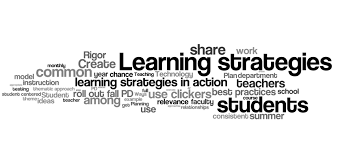 DonorDreams blog is honored to be hosting the May 2013 Nonprofit Blog Carnival. The theme this month is “Dear board volunteer . . .” and the idea is “If you could write an anonymous letter to a nonprofit board about something they do that drives you crazy, what would that letter look like and what suggested solutions would you include?” If you are a blogger and would like more information on how to participate and submit a post for consideration, please click here to learn more.
DonorDreams blog is honored to be hosting the May 2013 Nonprofit Blog Carnival. The theme this month is “Dear board volunteer . . .” and the idea is “If you could write an anonymous letter to a nonprofit board about something they do that drives you crazy, what would that letter look like and what suggested solutions would you include?” If you are a blogger and would like more information on how to participate and submit a post for consideration, please click here to learn more.
I wanted to expand the Nonprofit Blog Carnival concept in May. So, I reached out to real non-profit people and asked them to also write an anonymous letter to their board volunteers. These people are executive directors, fundraising professionals, board members, donors, community volunteers, consultants and front line staff. I promised everyone anonymity in exchange for their submissions.
We will celebrate May’s Nonprofit Blog Carnival on Wednesday, May 29, 2013. Up to that fun-filled day, I will publish real anonymous letters every day right here at DonorDreams blog.
I hope you enjoy this real look at real issues that our community deals with on a daily basis.
Here is today’s letter:
Dear Board of Directors,
Thank you for your commitment and dedication to the mission of our non-profit organization. I am very proud of the tremendous strides that we have taken as a board and as an organization in the last three years. As you all know, developing our board into a high functioning and high profile board has been a key objective in our three-year strategic plan. We have worked diligently at achieving that objective by implementing a standing governance committee to focus on the core governance, composition, and performance of our board.
The governance committee has suggested, and you have adopted policies and procedures around assessing the performance of individual board members as well as the board as a whole. These actions have resulted in:
- 100% board giving for the last three years,
- the development of an annual special event that raises the necessary revenue to sustain our summer program that was formerly funded solely by federal grant dollars,
- 100% board member completion of the individual commitments on the Board Commitment Form,
- a 71% increase in reserve funds, and
- a 415% increase in giving for our annual campaign.
As they say, what gets measured gets done.
As we reflect on our amazing successes in board development, I can’t help but wonder why the same amount of effort has not been given to developing my capacity as the Executive Director of this organization.
It is difficult for me to comprehend why setting my annual goals, and assessing my performance, is only completed when I harass you enough to do it. Why can’t you ever get a task force together to complete this critical task, and why do you apply a rubber stamp to my recommendations? I am baffled by this because the vast majority of you are successful leaders in your respective business fields, and a number of you have built very successful companies.
I’m certain your road to achievement as a leader has included successfully establishing performance criteria and appraising the performance of your subordinates and employees. Similarly, I’m sure that our goal setting and performance measurement successes as a board have not escaped your attention.
Just imagine what we could accomplish together if you were to form a task force to come along side me in setting my annual objectives and completing a thoughtful performance appraisal and professional development plan. Take a moment to envision the amazing alignment we would have if the full board took sufficient time to review my goals and approve my performance appraisal and professional development plan.
Engaging the full board in this process would certainly take care of any misperceptions that exist about what the Executive Director’s role is vs. the board’s role.
Thank you for being deliberate in creating a high performing, high profile, strategic board of directors. Please consider taking the next step in our organization’s development by spending the necessary time to develop the leadership of the organization. I can promise you that you will not be disappointed with the return on your investment.
Sincerely,
ROI Roger
If you have some advice for the author of our anonymous letter, please be respectful and share it in the comment box at the bottom of this post.
Here’s to your health!
Erik Anderson
Founder & President, The Healthy Non-Profit LLC
www.thehealthynonprofit.com
erik@thehealthynonprofit.com
http://twitter.com/#!/eanderson847
http://www.facebook.com/eanderson847
http://www.linkedin.com/in/erikanderson847
 It is year-end and I’ve been working with a few clients on year-end things like solicitation mailings, various planning projects, and of course year-end evaluation and 2015 performance management plans. The fourth quarter is a busy time of the year with many different balls to juggle.
It is year-end and I’ve been working with a few clients on year-end things like solicitation mailings, various planning projects, and of course year-end evaluation and 2015 performance management plans. The fourth quarter is a busy time of the year with many different balls to juggle.
 Two men were walking through the woods when a large bear walked out into the clearing no more than 50 feet in front of them.
Two men were walking through the woods when a large bear walked out into the clearing no more than 50 feet in front of them. Ha!
Ha! But here’s something we can predict: embedded in these cultures we will find organizational policies and/or management practices that pit one associate against another … we will find policies and/or practices that recognize and reward individual achievement without also recognizing and rewarding teamwork and team results … and we will find organizational initiatives that at best only temporarily solves problems (because they only address symptoms) without real and substantial effort and action to fundamentally address the root causes of problems.
But here’s something we can predict: embedded in these cultures we will find organizational policies and/or management practices that pit one associate against another … we will find policies and/or practices that recognize and reward individual achievement without also recognizing and rewarding teamwork and team results … and we will find organizational initiatives that at best only temporarily solves problems (because they only address symptoms) without real and substantial effort and action to fundamentally address the root causes of problems.
